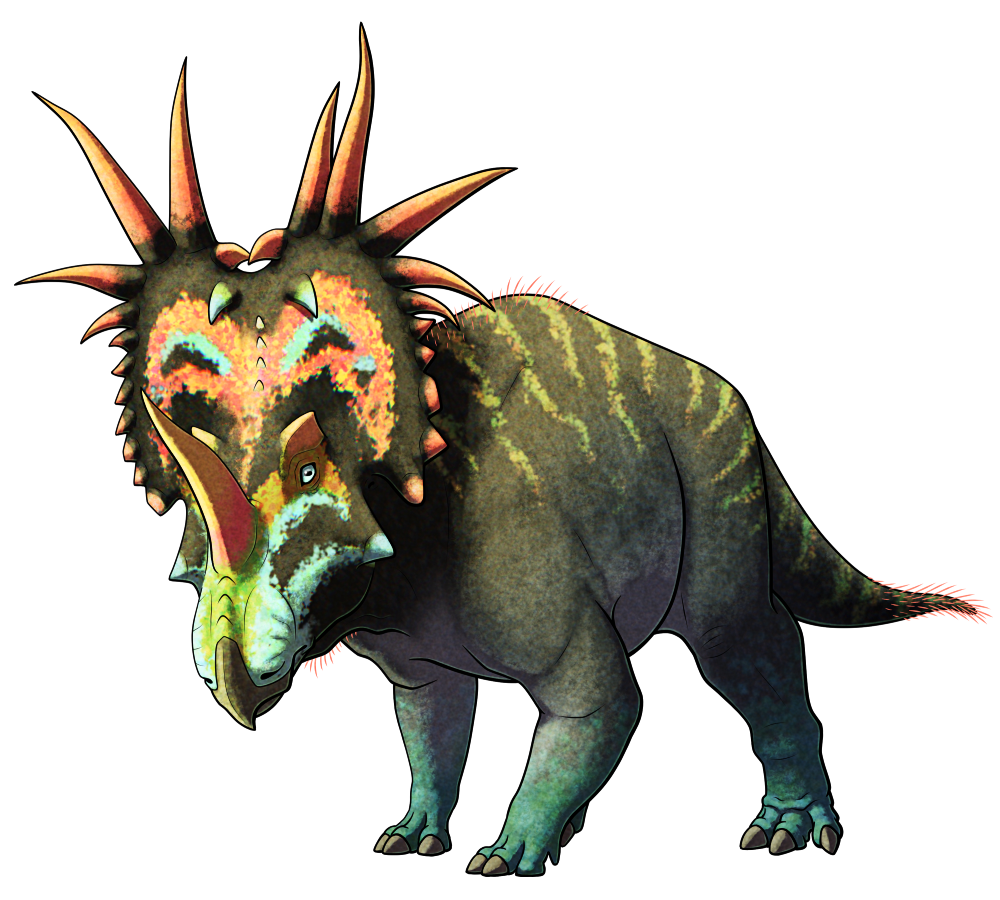Styracosaurus albertensis was a ceratopsid dinosaur living during the late Cretaceous about 75 million years ago, in what is now Alberta, Canada. Around 5m long (~16′), it was one of the most elaborately ornamented horned dinosaurs, with a long nose horn and multiple elongated spikes on its frill.
There was actually quite a lot of variation in the frills of Styracosaurus, with varying numbers of long spikes and extra hook-like projections present on some individuals. But one recently-discovered specimen nicknamed “Hannah” is especially surprising – it had a noticeable amount of asymmetry in its skull. The left and right sides show different numbers and arrangements of spikes, so much so that if the two halves had been discovered separately they might have been identified as belonging to two completely different species.
Frill arrangements are often used to define different ceratopsids, so if this level of individual variation and asymmetry existed in other species, too, then we may need to reevaluate some of them.

